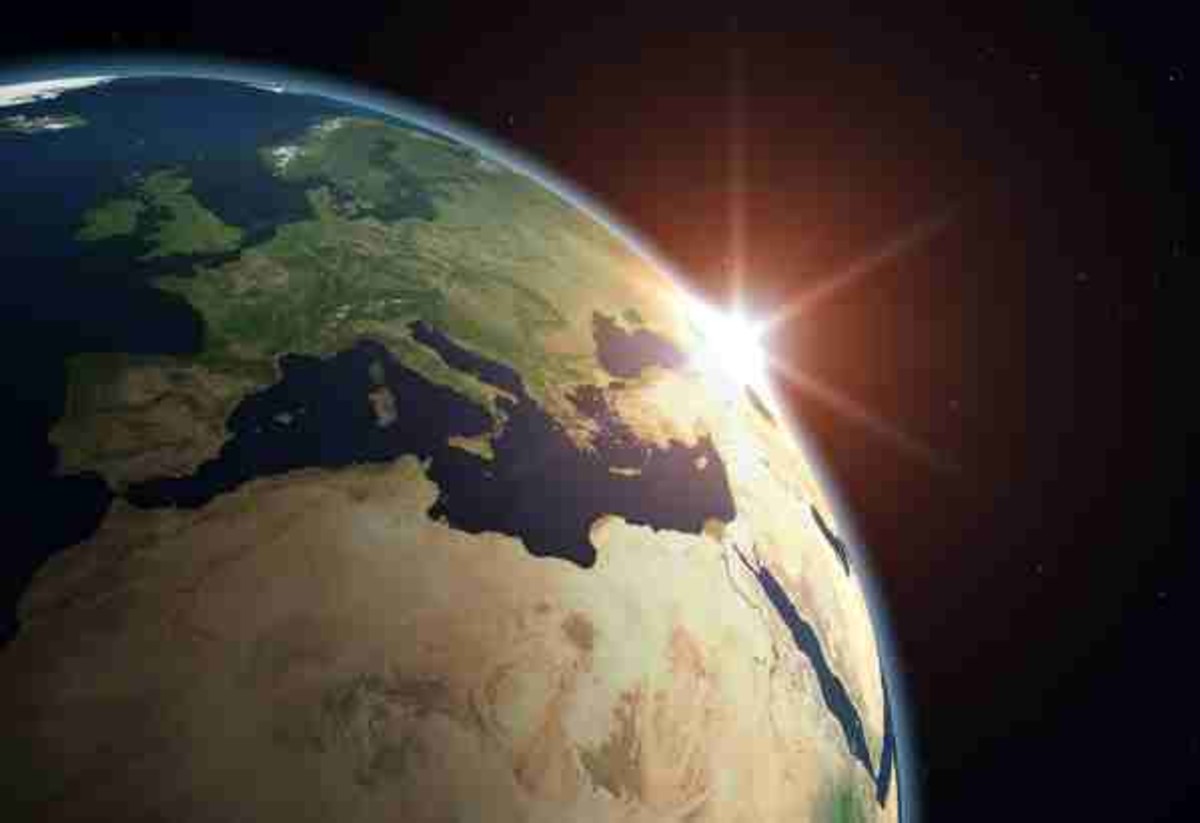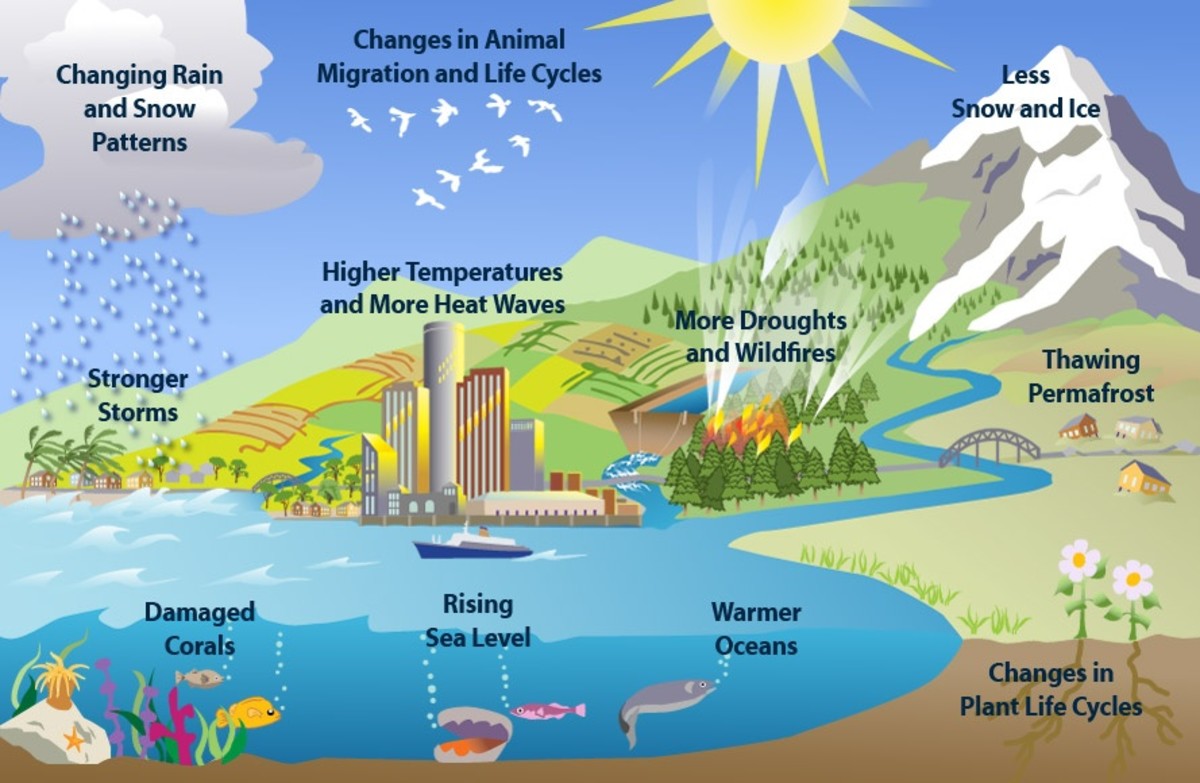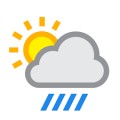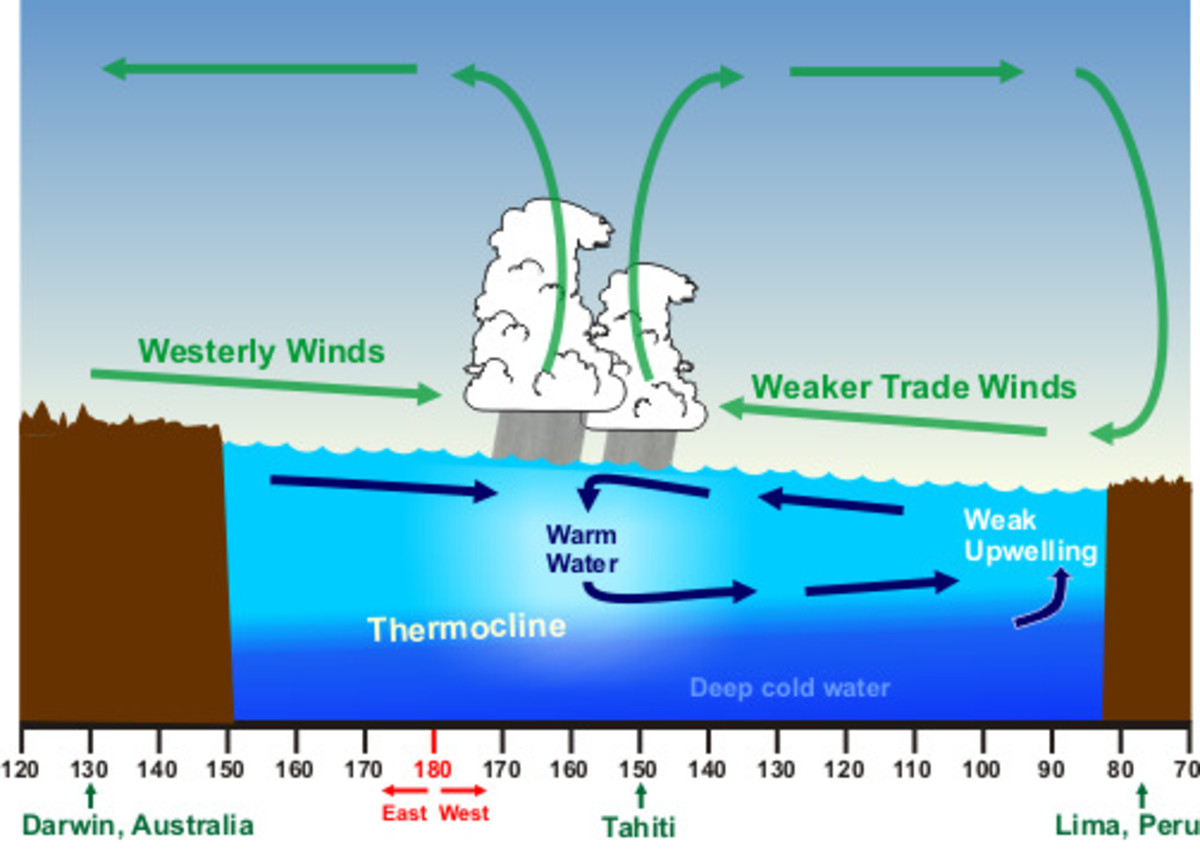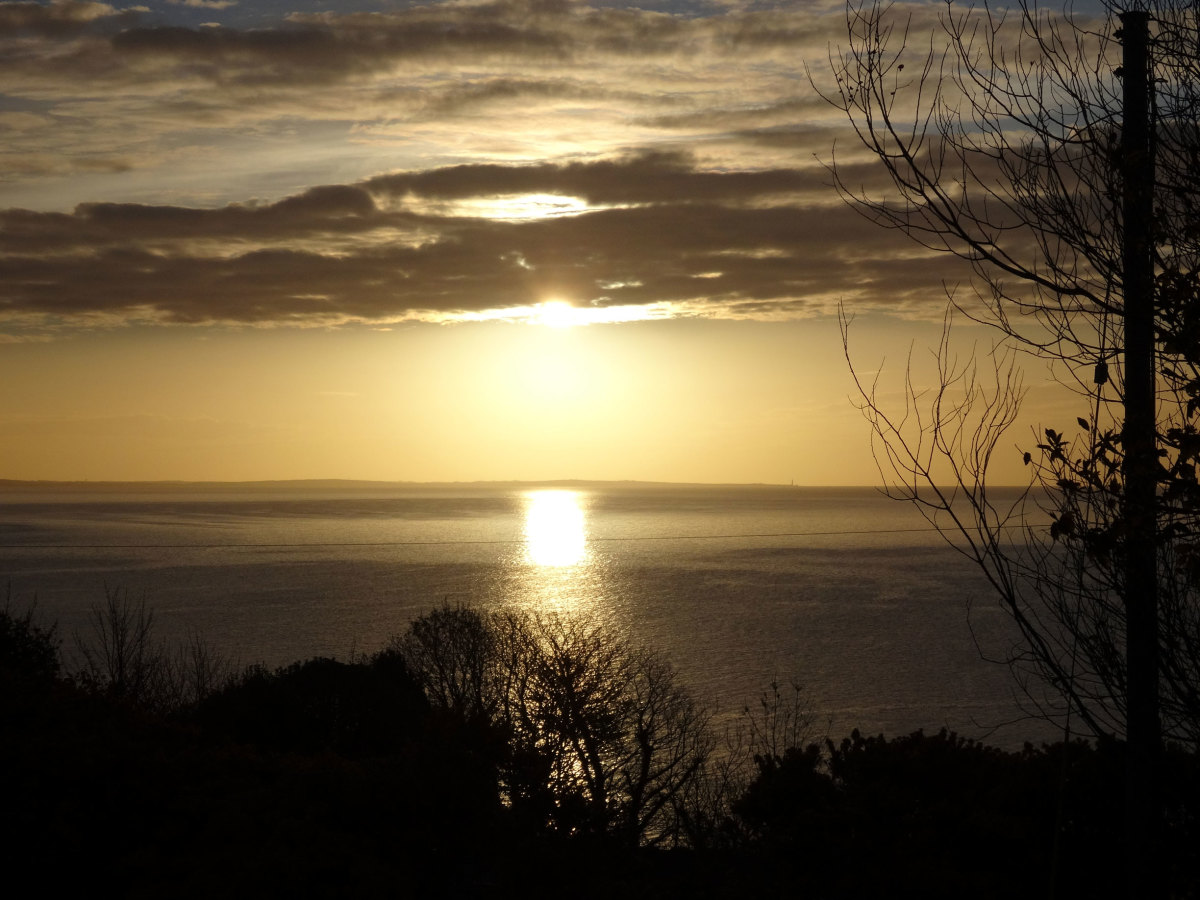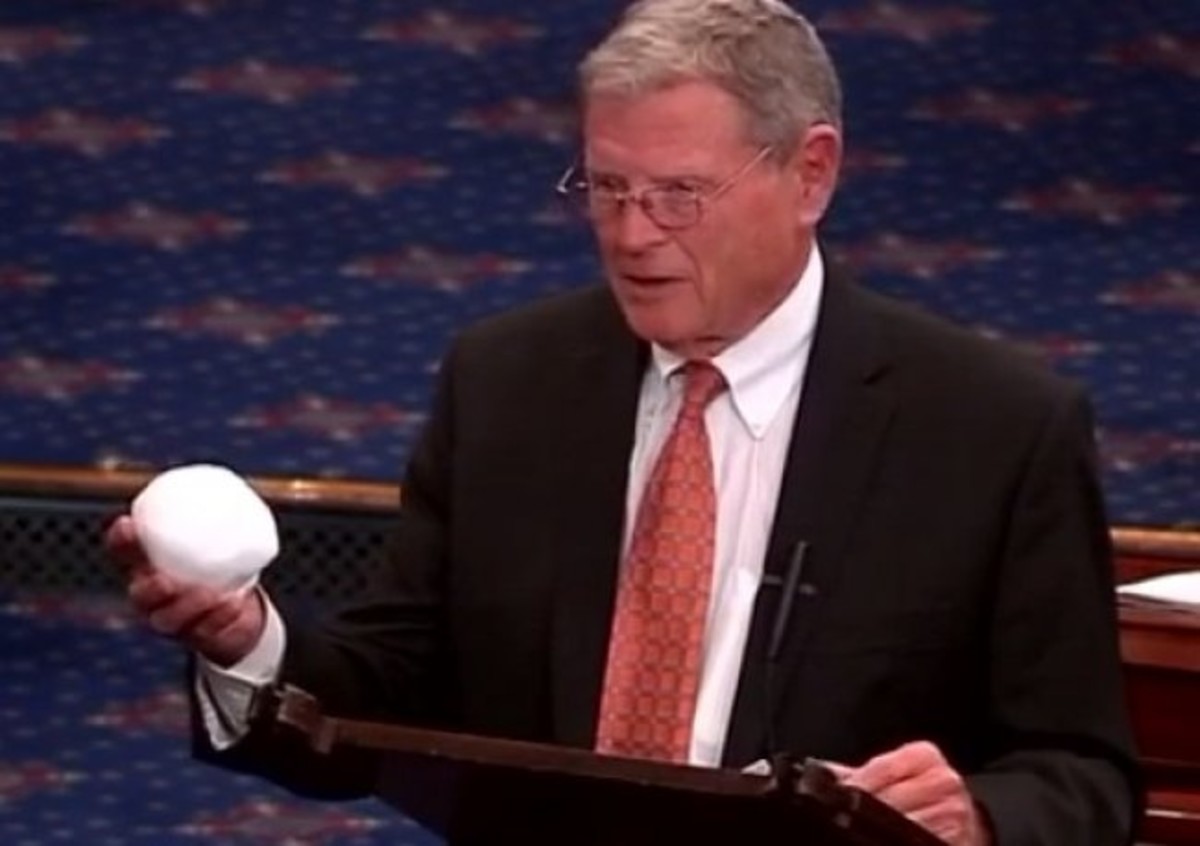Cultural Implications of Climate Change: Effects on Inupiat and Saami Communities
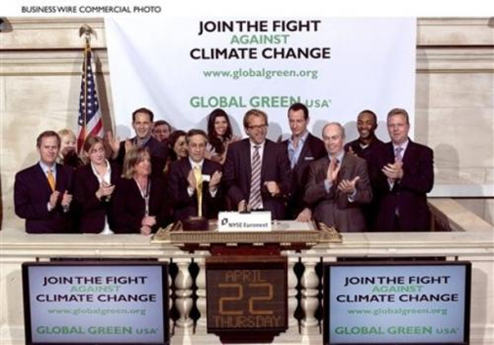
By Myranda Grecinger
Global warming, or climate change, as it is now referred to, is a major issue facing the entire world. It affects all living species and all ecosystems and has been rapidly effecting temperatures and forcing change for years. It has only been relatively recently that the issues caused by climate change and the vastness of the implications for the future of the Earth and mankind have really been heavily studied. Nowhere are the effects of global warming as visible as in the Arctic. Climate change has severely devastated a variety of plants, animals and human communities, and yet the issue is far from being resolved. Perhaps when faced with the damage it has caused to real people such as the Inupiat of Kivalina and the Saami of Kautokeino human kind will band together and find a way to improve the future of other communities by finding a workable solution to lessen or even to put an end to the anthropogenic contributions to global warming.
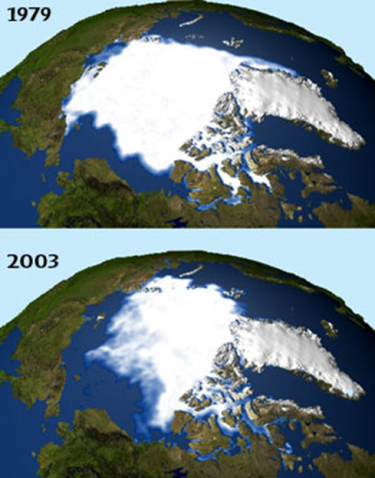
The Issue
Although the Earth regularly experiences shifts and cycles in weather patterns, the unprecedented changes that are being experienced now are more severe than the natural transitions and have human causes. Gases such as CO2, N20 and methane create emissions that are released into the atmosphere and are the top contributors to global warming as it is experienced on Earth today. Those emissions cause the heat from the sun to become trapped and raise the temperatures on this planet (Green facts staff, 1997). There are many indications that this influx of trapped gases is steadily increasing and that humans are the cause of this increase, in fact, “The atmospheric concentration of carbon dioxide is now far higher than in the last 650 000 years and has been growing faster in the last ten years than it has been since the beginning of continuous measurements around 1960” (Green facts staff, 2012). These changes are clearly unnatural climate trends. According to a 2012 report from the OSS Foundation “From the estimated forcing near the peak of the beginning of the Holocene 10,000 years ago, which is the base point for estimating current changes in radiative forcing we should be somewhere around 0.0 to -0.1W/m2, including natural variability. We are currently estimated at total positive human induced forcing of approximately +3.6 W/m2 with -2 W/m2 of human induced negative forcing from aerosols giving us a net estimate on the mean of +1.6 W/m2.” This report clearly shows trends in climate, chemicals and gas levels within planet Earth’s atmosphere that can only be referred to as purely anthropogenic, meaning the activities of people have cause them.
Global warming is severely detrimental to the Earth and all who dwell here, a fact which has been proven time and time again. There are many human and animal health and wellbeing hazards that can be directly related to global warming and climate change trends. In the year 2003, for example, an extreme heat wave in Europe which involved temperature increases of nearly twenty degrees above the norm for that time of year led to the deaths of approximately 21,000 to 35,000 human lives spanning five countries. More than 14,800 of the casualties were reported in France alone (Climate Institute, 2010). It is clear that global warming has real effects on real people. Of course the effects of climate change on human health do not end with human reaction to extreme heat.
Global warming brought on by anthropogenic climate change presents a major health risk to humans. An influx in infectious diseases, insect infestation, bacteria and mold account for even more risks associated with current climate trends (Climate Institute, 2010). Toxic water conditions such as the recent blue-green algae outbreaks in fresh water lakes found in the southern United States pose extreme threats to people in affected areas, to say nothing of the brain eating bacteria found in fresh water lakes in the northern United States. Bacteria and germs thrive in extreme heat while the human immune system suffers. The problems and risks are far from ending at health crises though.
Global warming presents several major problems to many Arctic cultures, especially those residing near the coast. Every day they are faced with the changes around them that lead to one inevitable conclusion: if climate change does not slow soon, their way of life will be at the least disrupted, at worst, irretrievably lost. The land around them is changing. For some groups it means they are losing land do to melting ice or from the flooding that comes as a result. For others the environmental changes mean loss of wild game to hunt and sustain themselves. Still others are concerned with loss of grazing land for their herds. Whatever the most important concern to each group may be, the threat is imminent. Their very homes, livestock, culture and lives are at stake.
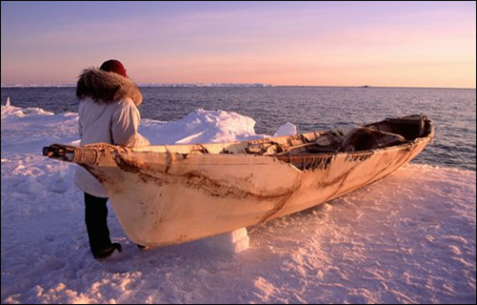
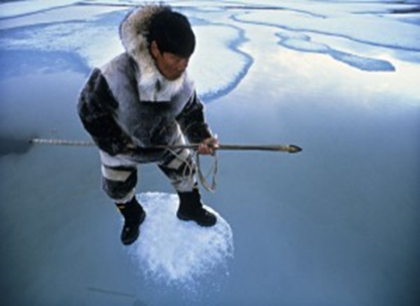
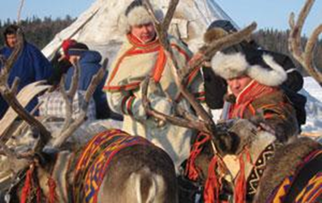
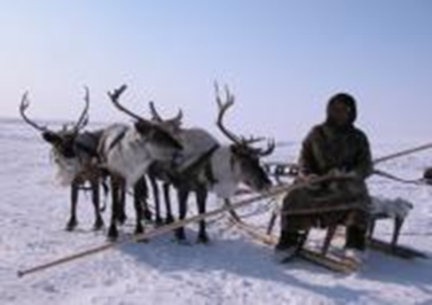
The People
The Inupiat of Kivalina and the Saami of Kautokeino are two cultures that have been severely inhibited by the effects of climate change in the Arctic. The loss of sea ice at declination rate of sea ice at twelve percent per decade (Schneider, 2012) has prompted one Inupiat village’s decision to file a lawsuit against several major companies whose emissions are said to be some of the greatest contributors to the current climate. The law suit filed on their behalf explains that the village and its’ people require retribution for the damage caused them. The loss of sea ice has led to the village being battered by horrific sea storms from which they were once protected by extensive sea ice and they are finding it difficult to pursue their cultural traditions, some of which include basic modes of subsistence.
Inupiat culture with regards to coastal communities once revolved around beluga whaling (Niezen, 1997). They also traditionally relied on subsistence hunting of seal, walrus, and caribou as well as salmon fishing (Jones, 2008) and a great deal of their cultural practices and belief systems rest on the expectation that they will be able to do these things, but those elements are slowly slipping away (Chance, 1990) partially, or perhaps even largely due to global warming as rising temperatures have had a negative impact on whale populations and the loss of sea ice inhibits some aspects of fishing, hunting and whaling. The government, apparently, has found itself unable to assist them and thus they have resorted to allocating the costs of a necessary relocation and implementing other cultural changes to those they deem most responsible for the problem (Chance, 1990) (Green facts staff, 1997) (Jones, 2008) (Niezen, Ronald, 1997).
Traditional Saami reindeer herding and the Saami way of life are steadily disappearing. The Saami are Europe’s only indigenous people. They have followed their cultural traditions in the same manner throughout their known history. Due to current climate changes much of the land they once roamed freely which was useless for many other purposes because of the icy conditions has now become lush and green and is being purchased by big businesses and power companies thus reducing the size of their territory and inhibiting their reindeer herding. Another thing that Saami culture relies on is fishing, but melting ice prevents access to traditional fishing for some coastal communities and others are reporting dwindling fish populations as water temperatures increase. (Arctic Council and the International Arctic Science Committee, 2004) (Region Arctica Staff, 2012) (United Nations Regional Information Center, 2009). The Inupiat of Kivalina and the Saami of Kautokeino have clearly been affected deeply by global warming, the phenomenon has created wounds in these communities that may never fully heal and will only continue to diminish the traditional culture and quality of life of these people and many more if left unchecked.
The Need for Action
The general public needs to take this issue seriously in order for anything of value to be accomplished, one way to help them to see the importance of such an issue would be to give it a human face and address the issue from an anthropological standpoint. Anthropologists study cultures and therefore have a better chance of finding ways to connect with people and make this an issue that they not only comprehend but feel a call to action to. It has been said that humans may feel more inclined to respond more efficiently and effectively to the issue when they can put a human face to it and understand who it affects and how it effects them (Martello, 2008), this is certainly one tool that anthropologists could use to aid in spreading the word and convincing the world to face the reality and scope of this problem.
Although the Earth regularly experiences shifts and cycles in weather patterns, the unprecedented changes that are being experienced now are said to have anthropogenic causes, meaning humans are to blame and it is anything but natural and people need to know that. The problem is that although humans are the cause of climate change as it exists today, they are not effectively agreeing to or implementing any real solution. This is a global problem, meaning it basically affects every natural resource, every piece of land, and every living creature on the face of the Earth in some way, shape, or form. If industrial emissions and other human created contributors to climate change are not effectively addressed soon and the current trends instead continue, further destruction and eventual doom will be the only future of our planet and all of its inhabitants.
There is no escape from the problem, nor is there anywhere to pass the blame or responsibility, humans are the cause and are the only hope to stop, reverse, or at the very least, slow the process. It would seem that such a wide spread problem with such dire consequences should be taken seriously and should therefore be placed at the top of every agenda, but instead, governments and businesses bicker over who is more at fault, who the biggest liability rests on, and even whether or not it is a real issue to be concerned with despite the overwhelming evidence. Due to the inability to reach a general consensus for the good of the planet and misplaced focus, people, animals and lands that have already been heavily and indisputably affected by climate change are left with little hope of relief. The extent of the damage and the implications for the future continue to grow daily, this is not a time for playing the “not me” game we all took part in to evade accusations of guilt or required consequence for a wrong committed, this is the time to step up and answer the call to action as only humans can, the real problem is getting humans from all around the world to understand that and get involved.
What Good is Anthropology
A wide spread problem requires a widespread response and therefore every culture needs to be made aware of the dangers as well as their causes and how to combat them. The best way to combat an anthropogenic problem is through the use of anthropology. Studying different cultures and gaining a better understanding of how they do things and how they perceive things would significantly improve the chances of creating a slew of viable campaigns for this issue in every culture. The cases of the Saami and Inupiat cultures and how they have been devastated by global warming can help people to understand the broad implications of the issue by encouraging them to face the fact that the problem is real and that it is more than just a bunch of scientific jargon, it is a problem, a big one, and it is hurting real people and damaging their lives.
Anthropologists could also be useful in assessing the aspects of a wide array of cultures that would be most affected by global warming and help people to understand how their community and culture is affected. People need to know how big the problem is and what it means to them, how they could be affected in the grand scheme of things and how they can help as well. Climate change is a global problem which not only effects people, but is also caused by people, so a profession which studies people would be the most likely candidate for reaching people in response to the issue and making a difference.
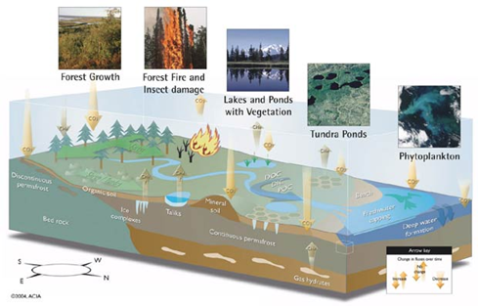
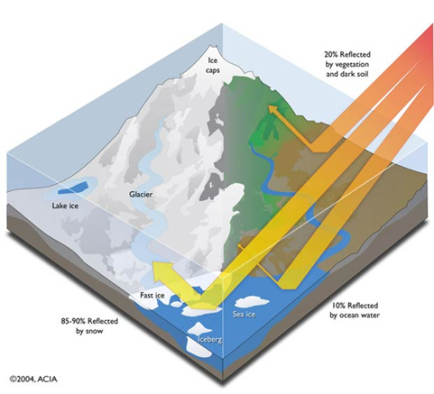
Facts and Quick Recap
Arctic sea ice has declined over 32% since 1979 according to a study by the National Snow and Ice Data Center (Global Warming Staff, 2012) and temperatures in Alaska alone are up at least by five degrees Fahrenheit (Rosen , 2004). Native Alaskans would need to be told these facts and how they would be affected by them. Examples should be given to aid the peoples’ comprehension of the severity of the situation such as certain lakes will no longer be frozen over meaning they are unsafe for regular travel for hunting or for ceremonial meetings. Knowing the facts and how they affect different people could help convince them of the importance of this issue by letting them come to the conclusion on their own. Humans meeting in large or small groups to discuss the implications for them and their cultures on a strait forward human to human basis may be the most effective method of helping effected communities as well as spreading awareness to those who may as of yet be unaware of what it could mean for them in the future or how it is effecting them now.
One question that must also be addressed is what is being done and what would be the implications for the future with regards to climate change. Climate change is the ultimate nightmare for human kind and yet, despite the fact that we hear mention of it daily, little has been done to resolve our part in it or to address the issues and struggles facing those most directly affected by it. Not much is being done right now although there are some special interest groups rallying for this cause and many governments have acknowledged at least a limited understanding of the issue, it is far from being resolved in any capacity. Governments may have focused more intently on resolving the loss of the Ozone layer than they have on CO2 and greenhouse gas emissions because it seemed an easier fix that required less of them and was a more obtainable goal with responses seeing immediate results, but the fact is that the handling of the Ozone layer issue gives strong evidence to the fact that when people care enough to focus on an issue that they are causing they can and will find a way by which to resolve it (Grundmann, 2006). Governments mobilized relatively quickly and succeeded in greatly reducing one major threat to the planet, it is time they do that for the issue of global warming.
Many people may be interested in the issue but simply need to know what to do. Although there may be many reasons for governments’ refusal to act, one of them is probably lack of a direction to go in as the issue affects everyone differently and the solution may impact many people heavily. They may also be concerned that should they act on the issue they would be the only ones and thus would become solely responsible. In 2010 the Canadian government highlighted this problem when they publicly refused to consider any method or possibility of addressing climate change until the U.S. did (Gage, 2010). Someone clearly has to take a stance or no one will. Perhaps the most effective way of addressing the need to act would be through multicultural consortiums that span several countries such as the United Nations. By addressing the issue as a single unit representing many countries no one government would need to bare the blame or the burden alone.
“Global warming not only affects the health but also human settlement patterns, subsistence and the lifestyle of people around the world” (Baer, 2009). Anthropology is clearly involved with the problem of global warming. It is affecting culture and is affected by culture. Thus, it is time for anthropology to get involved with the solution as well. Since some countries are looking to others to act first, it may be beneficial to work on understanding why the delay is necessary from a cultural standpoint and possibly assist in eliminating barriers and help get things moving.
Conclusion
There are no easy answers to the issue of climate change, in fact there are some who would argue that there is nothing that can be done at all as they believe it is part of the Earth's natural cycle, but it is hard to ignore so much data to the contrary. Global warming is responsible for more damage than can be counted by anyone study as it covers such a broadly spread problem. Everything from melting glaciers to wildfires, from floods to loss of habitat, from hunters becoming wage earners to grasslands and forests dying out can be directly attributed to global warming. The Inupiat of Kivalina and the Saami of Kautokeino are two cultures and communities that are without a doubt heavily impacted by global warming and are the perfect representatives of the future facing us all if we continue to do little to nothing and if we cannot find a way to help our fellow man and prevent the loss of his culture and community, how can we ever hope to help ourselves or expect others to prevent the loss of ours? If there was ever a reason for humans to work together, this is it. There is a workable solution, it just needs to be found, Climate change has already had profoundly destructive effects on some people’s lives but it does not have to continue it may be possible to lessen or even to put an end to the anthropogenic contributions to global, warming but someone has to take the initiative and be the first to act.
Check out these great videos for more info
References
Annotated Bibliography
1. Accuweather (2012) Climate Change Blog http://www.accuweather.com/en/climate-change This website operates the Global Climate Change Center which is a blog for updates on climate changes news.
2. AICA (2004) Carbon cycle in the Arctic, Impacts of Global warming. http://www.greenfacts.org/en/arctic-climate-change/figtableboxes/carbon-cycling.htm This image displays the role that carbon gas plays in heating up Arctic regions.
3. AICA (2004) Surface Reflectivity, Impacts of Global warming. http://www.greenfacts.org/en/arctic-climate-change/figtableboxes/surface-reflectivity.htm This image displays the importance of polar ice with regards to reflection of the sun’s rays and heat.
4. Arctic Council and the International Arctic Science Committee (2004) Case study of interacting changes: Saami reindeer herders http://www.greenfacts.org/en/arctic-climate-change/toolboxes/saami-reindeer-herders.htm This article describes how global warming has affected the Saami culture in Europe and how it causes difficulties that may lead to the end of their traditional reindeer herding.
5. Baer, Hans A. (2009) A field report on the critical anthropology of global warming: a view from a transplanted American down under http://connection.ebscohost.com/c/reports/41429267/field-report-critical-anthropology-global-warming-view-from-transplanted-american-downunder This report covers one anthropologist's firsthand experience with the effects of climate change as it pertains to culture.
6. Barry, Glenn (August 25, 2012) Climate Change and Global Warming Portal This blog is managed by environmental specialist, Dr. Glenn Barry and is dedicated to spreading the word about the dangers of global warming and associated issues as well as what can be done to improve the situation.
7. Chance, Norman A. (1990) The Inupiat and Arctic Alaska, The University of Connecticut, The Arctic Circle http://arcticcircle.uconn.edu/HistoryCulture/Inupiat This article describes the Inupiat culture which has been heavily effected by global warming.
8. Climate Institute (2010) Climate Change and Human Health http://www.climate.org/topics/health.html This article contains vital information regarding the effects of global warming both direct and indirect on human health.
9. Ervin , Alexander M. (2012) Applied Anthropology: Tools and Perspectives for Contemporary Practice, 2/e Vitalsource eBook for Ashford University This book contains useful information regarding recommendations on how to approach environmental issues from an anthropological perspective.
10. Gage, Andrew (2010) An open letter to conservatives regarding the Climate Change Accountability Act http://wcel.org/resources/environmental-law-alert/open-letter-conservatives-regarding-climate-change-accountability- This letter gives a brief overview on Canada's stance on global warming issues.
11. Gardner, Kasey-Dee (Apr 15, 2008) Earth: Signs of Climate Change in Alaska http://videos.howstuffworks.com/discovery/32605-earth-signs-of-climate-change-in-alaska-video.htm This video gives a brief look at how the problem of climate change is effecting cultures, events, wildlife and land in Arctic communities on the Alaskan coast.
12. Green facts staff (1997) The Threat of Climate Change to Arctic Human Communities http://Greenfacts.org This article gives an in depth look at how severely impacted Arctic communities are now and will continue to be in the future.
13. Gibson, Charles (12/14/2007) New Signs of Global Warming Arctic’s Ice could be melted by 2012 http://abcnews.go.com/Video/playerIndex?id=4002355__ This video provides an in depth look at the dangers of sea ice loss and its’ heavy impact on Arctic regions as well as the effect on global weather from Arctic refrigeration.
14. Global warming (2012) Statistics of the global warming trend web page provides factual information and statistics associated with global warming issues.
15. Grundmann, Reiner (2006) Ozone and Climate: Scientific Consensus and Leadership, Science, Technology, & Human Values , Vol. 31, No. 1 (Jan., 2006), pp. 73-101 http://www.jstor.org/stable/29733926 This report highlights the need for massive reform on climate change policy and how much more seriously it needs to be taken as well..
16. Hollenhorst, John (November 15th, 2011) Absence of Arctic ice affecting weather, global warming http://www.ksl.com/?nid=148&sid=18105863&title=absence-of-arctic-ice-affecting-weather-global-warming__ This report video highlights the extreme case of acceleration in disappearing sea ice in the Arctic causes by global warming as well as information on how these dramatic changes may affect communities as far inland as Utah in the United States.
17. INTERNATIONAL EXHIBITION CENTER OF CRETE (April 2012) Thin Ice This photo shows an Inupiat fisherman as he tests the thin ice in preparation for his traditional mode of subsistence.
18. Jones, Brent (2008) Alaska town sues over global warming, USA TODAY, 2/27/2008 http://www.usatoday.com/news/nation/2008-02-26-alaska-lawsuit_N.htm This article describes a massive law suit that one Inupiat tribe filed against major greenhouse gas emissions contributors in hopes of obtaining retributions for the severe damage their village has sustained and the costs of relocation due to the global warming that these gases resulted in.
19. Kaplan, Auren (November 5, 2010) Climate Change Biggest Threat http://www.aurenkaplan.com/2010/11/climate-change-biggest-threat-to-ending-poverty-human-progress/ This photo shows the severe declination of Arctic ice.
20. Lokienna, David (2009) Inupiat culture Blog http://inupiatculture.blogspot.com/ This blog highlights some important features and characteristics of Inupiat culture.
21. Martello, Marybeth Long (2008) Arctic Indigenous Peoples as Representations and Representatives of Climate Change, Social Studies of Science, Vol. 38, No. 3 (Jun., 2008) http://www.jstor.org/stable/25474584 This article describes major damage sustained by Arctic communities as a result of global warming and highlights the need for a human face to gain attention for the issue.
22. Monastersky, Richard (25 February 2009) International Polar Year: The social pole? As change in the Arctic accelerates, scientists and indigenous peoples have pressing reasons to work together http://www.nature.com/news/2009/090225/full/4571077a.html This Photo depicts some Saami people who have been deeply affected by climate change in traditional dress preparing for a cultural tradition.
23. Niezen, Ronald (1997) Traditional Beluga Drives of the Iñupiat of Kotzebue Sound, Alaska by Charles V. Lucier; James W. Vanstone, American Ethnologist, Vol. 24, No. 1 (Feb.,1997) http://www.jstor.org/stable/646596 This article describes typical traditions of the Inupiat culture that have been or will be deeply affected by global warming.
24. OSS Foundation (2012) Milankovitch Cycles http://ossfoundation.us/projects/environment/global-warming/milankovitch-cycles This article provides a plethora of scientific evidence to prove conclusively that the current climate change trends are not part of any natural cycle but rather are the direct result of human activity.
25. Pacific Environment (2012) Arctic communities are on the front lines of climate change http://pacificenvironment.org/-1-39 This photo depicts a Sammi reindeer herder who’s traditional lifestyle is at risk due to climate change.
26. Region Arctica Staff (2012) Discover Europe's last indigenous people and culture This article provides a brief glimpse into traditional Saami culture.
27. Reveron,Derek S. (April 23, 2010)Arctic Climate Change Strategies This photo is a depiction of law makers and leaders who have pledged to find a solution to global warming.
28. Rosen, Yereth (2004) Warming Climate Disrupts Alaska Natives' Lives, Global Coral Reef Alliance, April 16, 2004 This article describes the dangers to Alaskan coastal communities due to global warming trends.
29. Schneider, David (2012) Rapid Arctic Sea Ice Loss On Par with 2007 Record Season, Climate Central http://www.climatecentral.org/news/arctic-sea-ice-loss-on-par-with-2007-record-season This article provides solid evidence regarding the rate of polar ice declination.
30. Seventh Generation Fund (Apr 23, 2008) Saami Youth on Climate Change http://www.youtube.com/watch?v=APISU8FaB7Q__ In this video three young Saami women describe how global warming has affected their culture.
31. Smith, Mark and Wilson, Jeff (2012) Frozen Planet: Vanishing Ice Caps http://dsc.discovery.com/tv-shows/frozen-planet/videos/vanishing-arctic-ice-cap.htm__ This short film provides information in relation to the rate of disappearance in polar ice caps over the last twenty years and how it effects wildlife.
32. Sohn, Emily (April 13, 2009) For Alaska's Inupiat, Climate Change and Culture Shock, Discovery News This photo depicts an Inupiat person preparing to launch a boat in an area that typically would have been frozen in that time of year.
33. United Nations Regional Information Center(2009) Scandinavia’s Indigenous Saami Way of Life Threatened by Thawing Tundra http://www.coolplanet2009.org/news-environmental-issues/698-unfpa-scandinavias-indigenous-saami-way-of-life-threatened-by-thawing-tundra.html This report provides an in-depth look into the dangers that many Saami communities are facing, in short, cultural devastation.
© 2012 Myranda Grecinger

